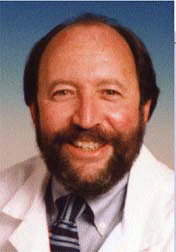From Concept to Testing
William E. Bolger, MD, an otolaryngologist with the Maryland Sinus Center in Bethesda, who was involved in balloon sinuplasty clinical trials, described how an idea is taken from concept into testing.
Explore This Issue
July 2007“Often, the effective use of the device is already known,” he said. Whereas drugs have a very involved process of multiphase clinical trials, the testing of devices is primarily to determine safety and effectiveness. “The FDA recognizes that with devices, the product developer and the end user—physicians—have to communicate. This is not just for innovation, but also to make devices safer and maximally effective for best medical practices.”
Dr. Bolger noted that since 1980 and the Bayh-Dole Act (in which innovation was stimulated as universities were allowed to commercialize their inventions without the loss of federal funding), corporate contributions to university research budgets increased from a little over $20 million to $2.3 billion in 2000. “Today, 60 percent of all clinical trials in the United States are funded by the biotech and pharmaceutical industries. We have to recognize that many patients have benefited from industry’s involvement,” he said.
However, when industry finances a study, there are financial biases that must be addressed through disclosure, he said, adding that physicians should also be aware of additional sources of bias including politics, personal beliefs, rivalries, and academic passions.
Dr. Bolger ended his remarks by noting that he has often been approached by salespeople from companies. “I would like to see a process where otolaryngology colleagues can show me real testing data. Subject it to publication and peer review,” he said. “And we would like to have the people with the most experience with the technology participate in its evaluation.”
Corporate Point of View
Representing the corporate viewpoint was panelist William M. Facteau, President and CEO of Acclarent, Inc., the Menlo Park, CA, company that makes the device used in balloon sinuplasty™.
“When a salesperson approaches you,” he told the audience, “be assured that the company has gone through a tremendous amount of work and effort in navigating through the entire development process.”
Mr. Facteau noted that safety is the most important thing a medical device company needs to take into consideration before launching a new technology. “That is our biggest challenge and our direction. When is the right time to move from a bench model or to a cadaver, or to animals and then, finally, into humans?”

Leave a Reply